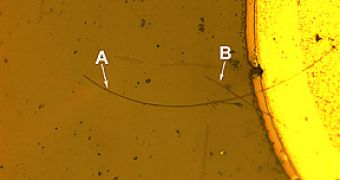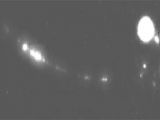A light-emitting diode (LED) is a semiconductor device that emits incoherent narrow-spectrum light through a form of electroluminescence. LEDs are small extended sources with extra optics added to the chip, which emit a complex intensity spatial distribution. The color of the emitted light depends on the composition and condition of the semiconducting material used and can be infrared, visible or near-ultraviolet.
Now, for the first time, researchers at the National Institute of Standards and Technology (NIST), in collaboration with scientists from the University of Maryland and Howard University have created LEDs made of nanowires.
The new nanoscale applications are highly efficient light-emitting diodes and for the moment they can only emit ultraviolet light, which is by itself a key wavelength range required for many light-based nanotechnologies, including data storage.
Researchers used photolitography, a process used in microfabrication to selectively remove parts of a thin film, used because it affords exact control over the shape and size of the objects it creates and because it can create patterns over an entire surface simultaneously.
The main aspect of the new product is the fact that it's made from a single compound, gallium nitride (GaN). Each LED consists of an "n-type" GaN nanowire placed on the surface of a "p-type" GaN thin film. "N-type" and "p-type" refer to semiconductors with, respectively, an abundance of electrons and an abundance of positively charged electron vacancies called holes. P-n junctions made from the same basic compound yield more efficient LEDs than those made with different compounds, and so can operate at lower power.
When a specific voltage is applied to these p-n junctions, they emit light with a wavelength of 365 nanometers, well in the ultraviolet range. The main advantages of the new LEDs are the fact that they can be controlled to exhibit similar emission properties, and that they displayed excellent thermal stability-withstanding temperatures up to 750 degrees Celsius-and operational stability, showing no signs of deterioration even after two continuous hours of operation at room temperature.

 14 DAY TRIAL //
14 DAY TRIAL // 
